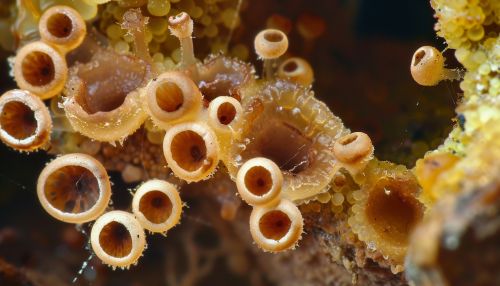Emericella
Introduction
Emericella is a genus of fungi within the family Trichocomaceae. This genus is known for its diverse species, many of which are significant in various ecological, industrial, and medical contexts. Emericella species are primarily characterized by their ability to produce ascospores within cleistothecia, a type of enclosed fruiting body. The genus was first described by the mycologist Charles Thom in 1910.
Taxonomy and Classification
Emericella belongs to the kingdom Fungi, phylum Ascomycota, class Eurotiomycetes, order Eurotiales, and family Trichocomaceae. The genus Emericella is closely related to the genus Aspergillus, with which it shares many morphological and genetic characteristics. However, Emericella is distinguished by its sexual reproductive structures.
Species Diversity
The genus Emericella comprises several species, including but not limited to:
- Emericella nidulans
- Emericella quadrilineata
- Emericella rugulosa
- Emericella variecolor
Each species exhibits unique morphological traits and ecological niches. For instance, Emericella nidulans is widely studied for its role in biotechnology and genetics.
Morphology
Emericella species are filamentous fungi that form a complex mycelium. The hyphae are typically septate and hyaline. The defining feature of Emericella is the production of cleistothecia, which are spherical, hard-walled structures containing ascospores. These ascospores are released upon the rupture of the cleistothecium.


The conidial structures of Emericella resemble those of Aspergillus, with conidiophores bearing chains of conidia. However, the presence of cleistothecia is a key distinguishing feature.
Ecology and Habitat
Emericella species are cosmopolitan, found in a wide range of environments including soil, decaying organic matter, and indoor environments. They play a crucial role in the decomposition of organic material, contributing to nutrient cycling in ecosystems. Some species are thermophilic, thriving in high-temperature environments such as compost heaps.
Symbiotic Relationships
Certain Emericella species engage in symbiotic relationships with plants and other organisms. For example, some species have been isolated from the rhizosphere of plants, where they may play a role in promoting plant growth through various mechanisms such as phosphate solubilization and production of growth-promoting hormones.
Industrial and Medical Significance
Emericella species are of considerable interest in various industrial and medical fields. Emericella nidulans, in particular, is a model organism in genetic research due to its well-characterized genome and ease of manipulation.
Biotechnology Applications
Emericella species produce a variety of secondary metabolites with potential applications in biotechnology. These include enzymes such as cellulases and xylanases, which are used in the degradation of plant biomass for biofuel production. Additionally, some species produce bioactive compounds with antimicrobial and anticancer properties.
Pathogenicity
While most Emericella species are non-pathogenic, some can cause opportunistic infections in immunocompromised individuals. For instance, Emericella nidulans has been reported to cause invasive aspergillosis, a serious fungal infection. The pathogenicity of Emericella species is often linked to their ability to produce mycotoxins and other virulence factors.
Genetic and Molecular Studies
The genome of Emericella nidulans has been extensively studied, providing insights into the genetic basis of fungal development, metabolism, and secondary metabolite production. The availability of genetic tools and resources has facilitated research on gene function and regulation in this genus.
Genetic Engineering
Emericella nidulans serves as a model for genetic engineering studies. Techniques such as gene knockout, overexpression, and RNA interference have been employed to study gene function and regulation. These studies have implications for improving industrial processes and developing new therapeutic agents.
